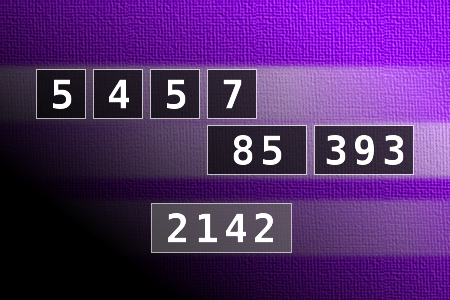Calculate the number 2142
NUMBERMANIA: Calculate the number 2142 using numbers [5, 4, 5, 7, 85, 393] and basic arithmetic operations (+, -, *, /). Each of the numbers can be used only once.Correct answers: 19
The first user who solved this task is Djordje Timotijevic.
#brainteasers #math #numbermania


